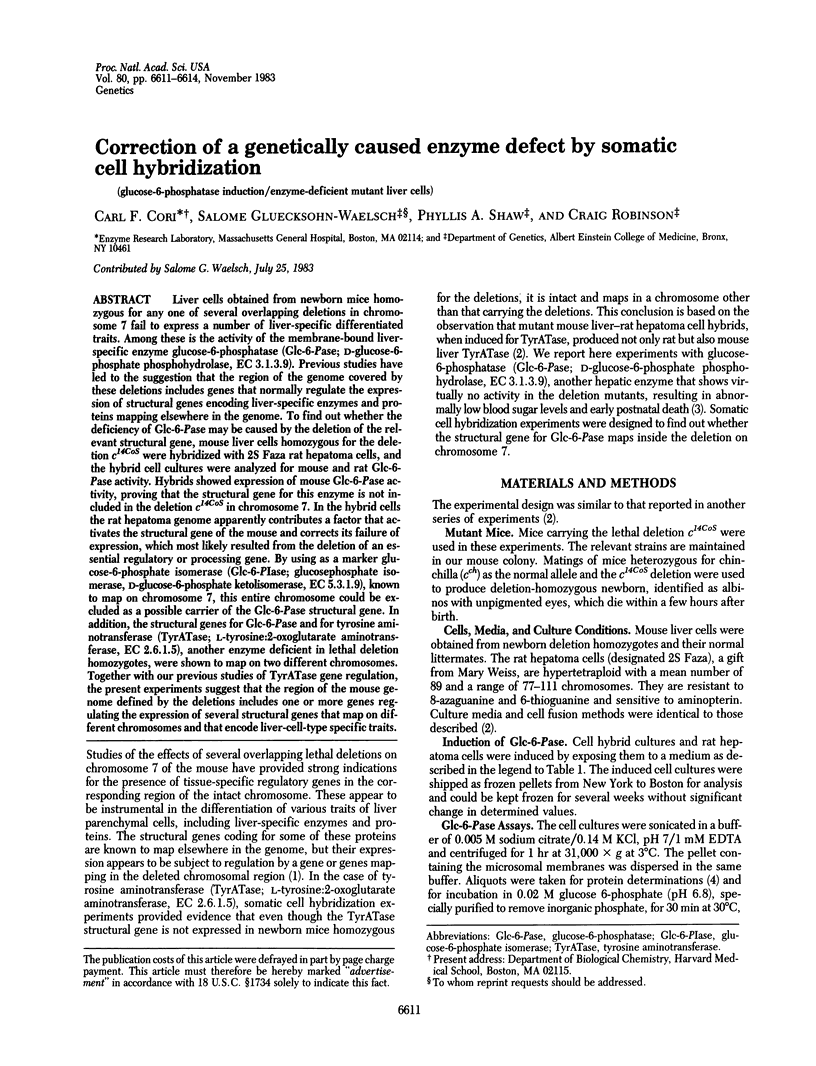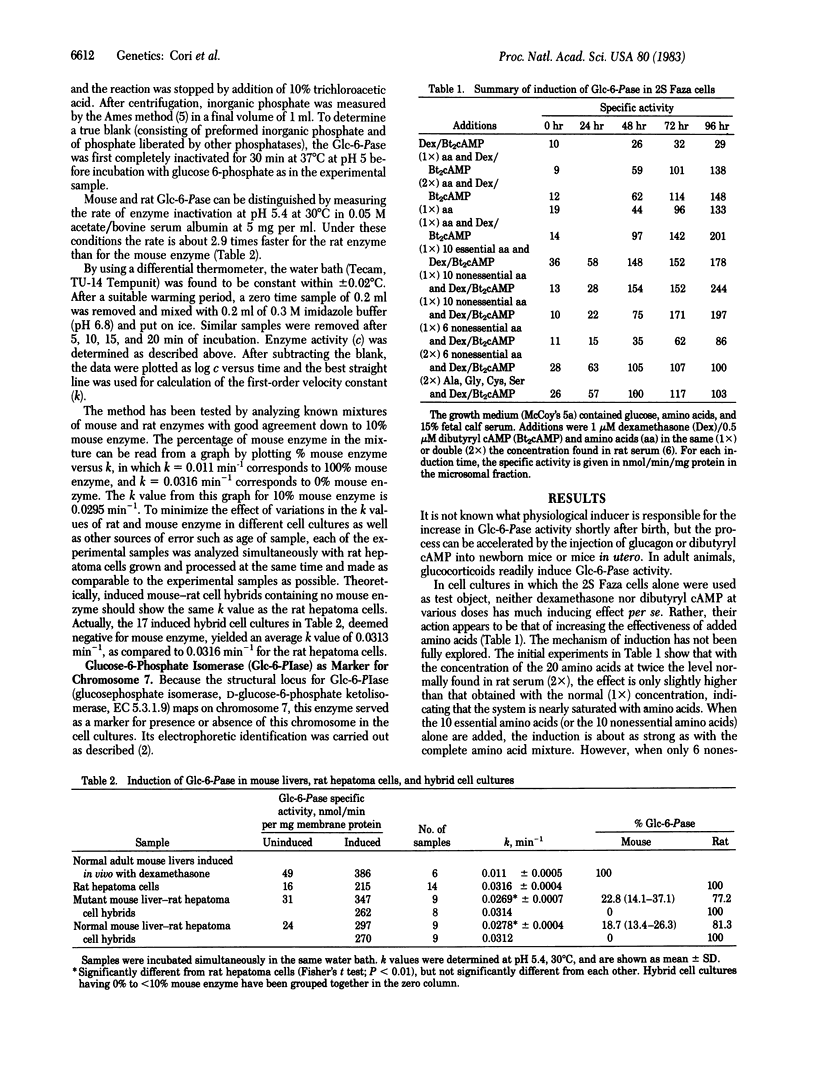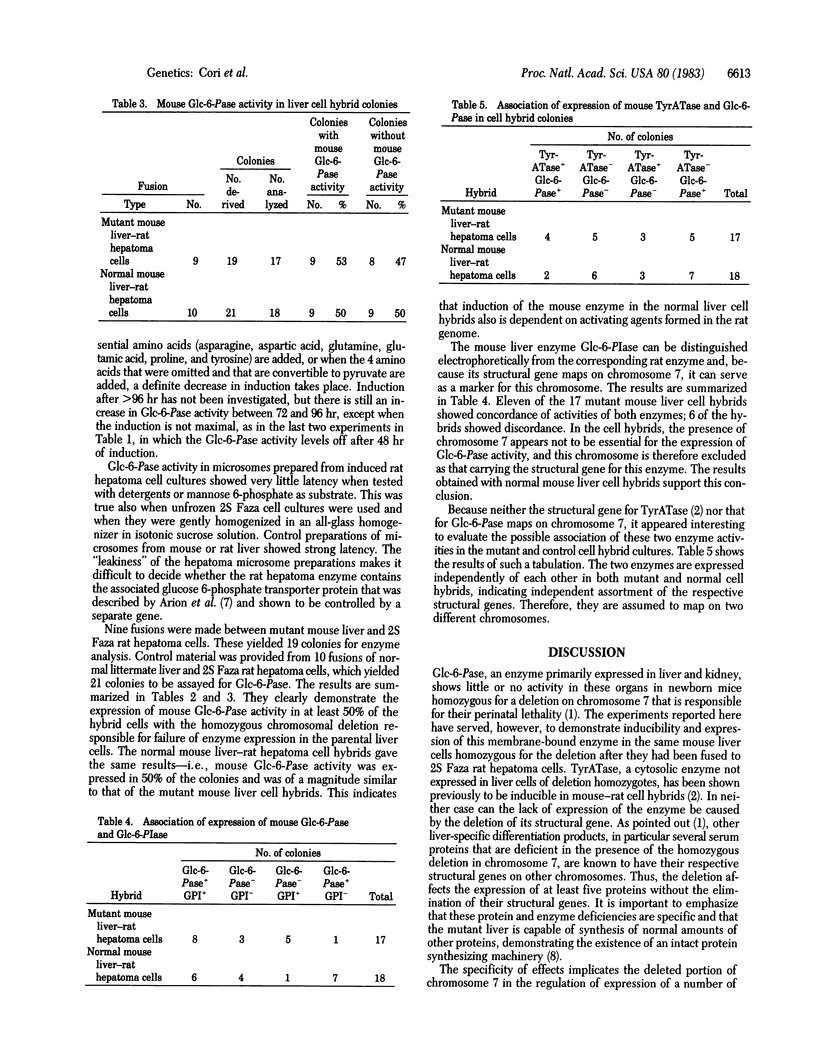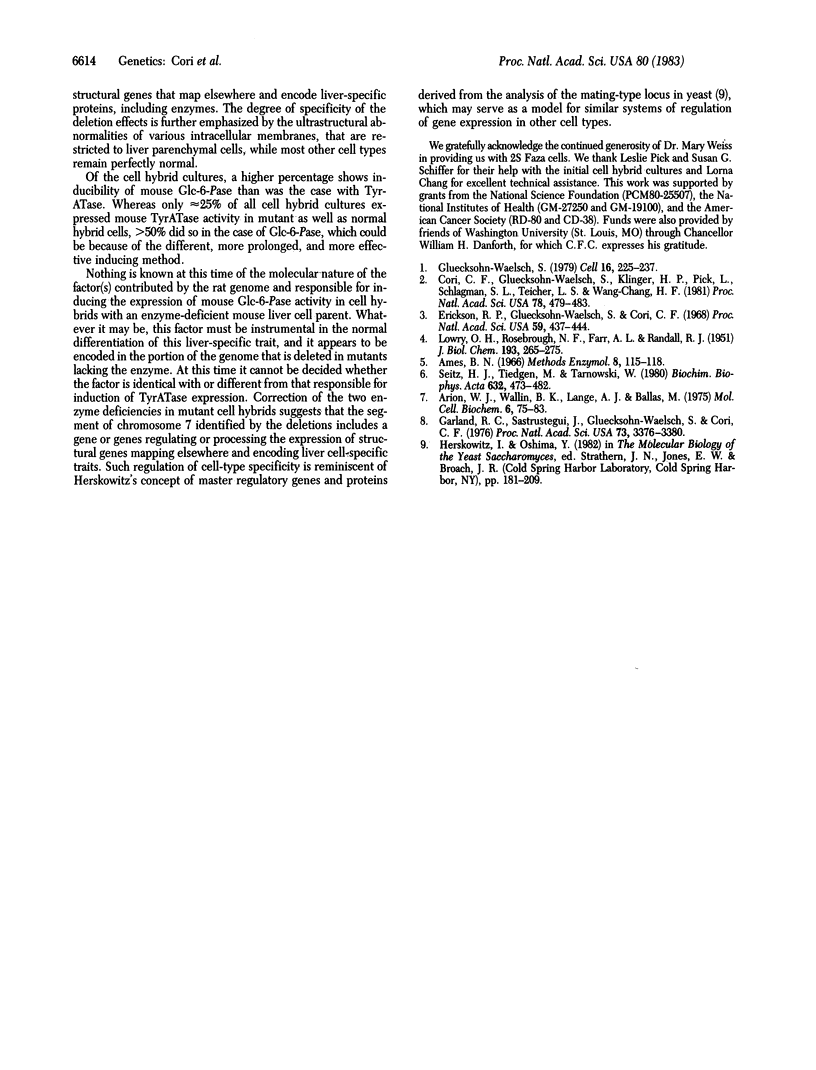Abstract
Liver cells obtained from newborn mice homozygous for any one of several overlapping deletions in chromosome 7 fail to express a number of liver-specific differentiated traits. Among these is the activity of the membrane-bound liver-specific enzyme glucose-6-phosphatase (Glc-6-Pase; D-glucose-6-phosphate phosphohydrolase, EC 3.1.3.9). Previous studies have led to the suggestion that the region of the genome covered by these deletions includes genes that normally regulate the expression of structural genes encoding liver-specific enzymes and proteins mapping elsewhere in the genome. To find out whether the deficiency of Glc-6-Pase may be caused by the deletion of the relevant structural gene, mouse liver cells homozygous for the deletion c14CoS were hybridized with 2S Faza rat hepatoma cells, and the hybrid cell cultures were analyzed for mouse and rat Glc-6-Pase activity. Hybrids showed expression of mouse Glc-6-Pase activity, proving that the structural gene for this enzyme is not included in the deletion c14CoS in chromosome 7. In the hybrid cells the rat hepatoma genome apparently contributes a factor that activates the structural gene of the mouse and corrects its failure of expression, which most likely resulted from the deletion of an essential regulatory or processing gene. By using as a marker glucose-6-phosphate isomerase (Glc-6-PIase; glucosephosphate isomerase, D-glucose-6-phosphate ketolisomerase, EC 5.3.1.9), known to map on chromosome 7, this entire chromosome could be excluded as a possible carrier of the Glc-6-Pase structural gene. In addition, the structural genes for Glc-6-Pase and for tyrosine aminotransferase (TyrATase; L-tyrosine:2-oxoglutarate aminotransferase, EC 2.6.1.5), another enzyme deficient in lethal deletion homozygotes, were shown to map on two different chromosomes. Together with our previous studies of TyrATase gene regulation, the present experiments suggest that the region of the mouse genome defined by the deletions includes one or more genes regulating the expression of several structural genes that map on different chromosomes and that encode liver-cell-type specific traits.
Full text
PDF



Selected References
These references are in PubMed. This may not be the complete list of references from this article.
- Arion W. J., Wallin B. K., Lange A. J., Ballas L. M. On the involvement of a glucose 6-phosphate transport system in the function of microsomal glucose 6-phosphatase. Mol Cell Biochem. 1975 Feb 28;6(2):75–83. doi: 10.1007/BF01732001. [DOI] [PubMed] [Google Scholar]
- Cori C. F., Gluecksohn-Waelsch S., Klinger H. P., Pick L., Schlagman S. L., Teicher L. S., Wang-Chang H. F. Complementation of gene deletions by cell hybridization. Proc Natl Acad Sci U S A. 1981 Jan;78(1):479–483. doi: 10.1073/pnas.78.1.479. [DOI] [PMC free article] [PubMed] [Google Scholar]
- Erickson R. P., Gluecksohn-Waelsch S., Cori C. F. Glucose-6-phosphatase deficiency caused by radiation-induced alleles at the albino locus in the mouse. Proc Natl Acad Sci U S A. 1968 Feb;59(2):437–444. doi: 10.1073/pnas.59.2.437. [DOI] [PMC free article] [PubMed] [Google Scholar]
- Garland R. C., Satrustegui J., Gluecksohn-Waelsch S., Cori C. F. Deficiency in plasma protein synthesis caused by x-ray-incuded lethal albino alleles in mouse. Proc Natl Acad Sci U S A. 1976 Oct;73(10):3376–3380. doi: 10.1073/pnas.73.10.3376. [DOI] [PMC free article] [PubMed] [Google Scholar]
- Gluecksohn-Waelsch S. Genetic control of morphogenetic and biochemical differentiation: lethal albino deletions in the mouse. Cell. 1979 Feb;16(2):225–237. doi: 10.1016/0092-8674(79)90001-1. [DOI] [PubMed] [Google Scholar]
- LOWRY O. H., ROSEBROUGH N. J., FARR A. L., RANDALL R. J. Protein measurement with the Folin phenol reagent. J Biol Chem. 1951 Nov;193(1):265–275. [PubMed] [Google Scholar]
- Seitz H. J., Tiedgen M., Tarnowski W. Regulation of hepatic phosphoenolpyruvate carboxykinase (GTP). Role of dietary proteins and amino acids in vivo and in the isolated perfused rat liver. Biochim Biophys Acta. 1980 Nov 3;632(4):473–482. doi: 10.1016/0304-4165(80)90324-4. [DOI] [PubMed] [Google Scholar]


